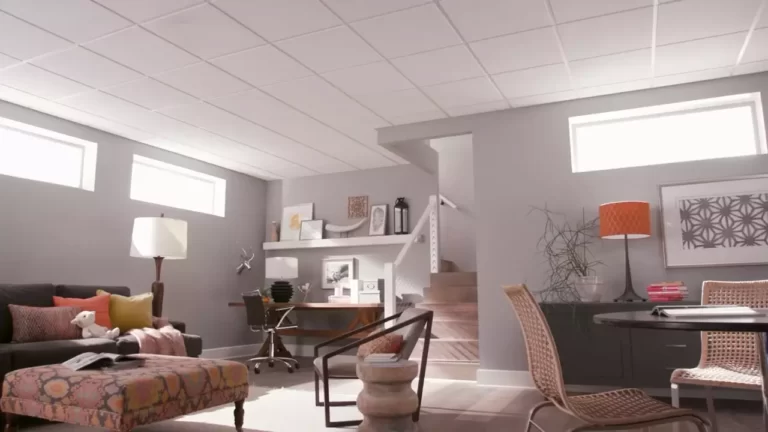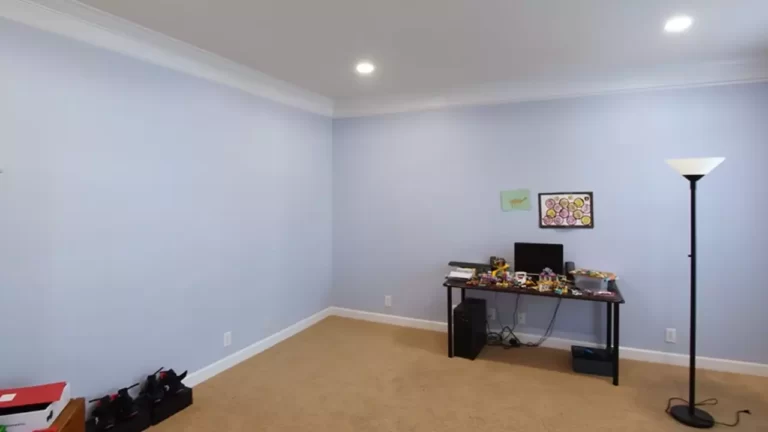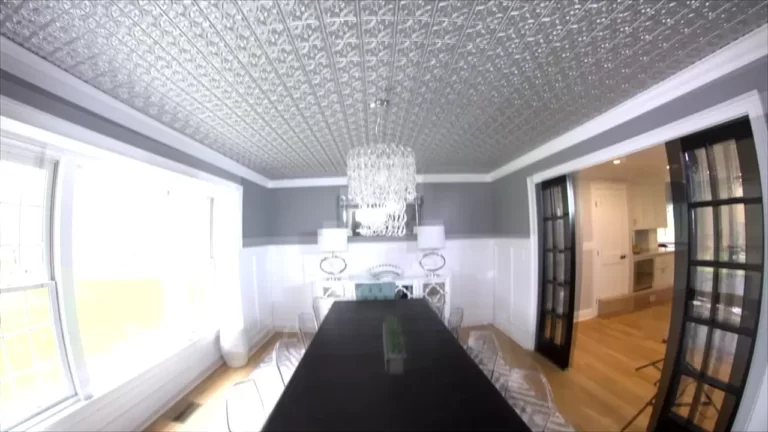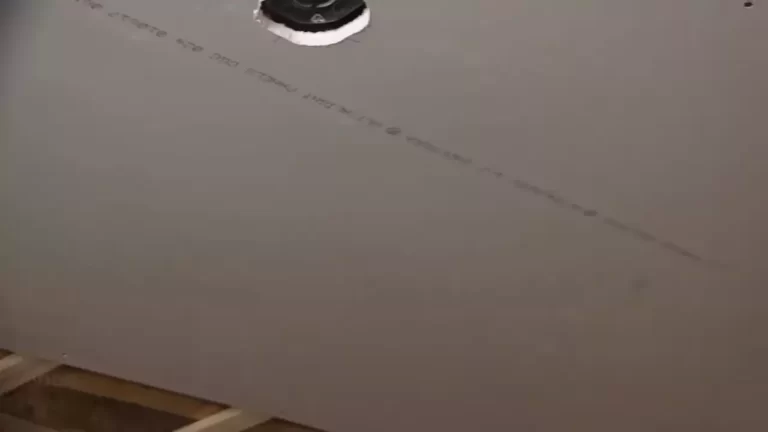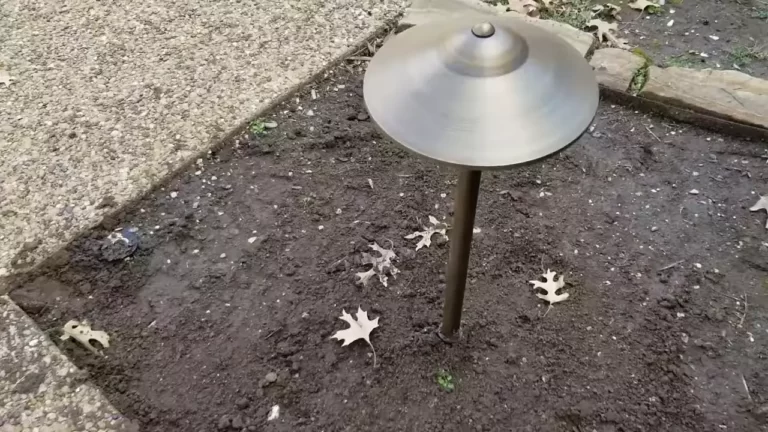How to Install Decorative Ceiling Tiles?
To install decorative ceiling tiles, measure and mark the desired layout on the ceiling, apply adhesive to the back of each tile, and press it firmly into place.
Factors To Consider When Choosing Decorative Ceiling Tiles
When it comes to choosing decorative ceiling tiles, there are several important factors to consider. From different materials and styles to proper measurements and compatibility with your existing ceiling, making the right choices can ensure a beautiful and seamless installation. By taking these factors into account, you can transform your space with stylish ceiling tiles that enhance the overall aesthetic. Keep reading to explore each factor in more detail.
Different Materials and Styles
One of the key considerations when choosing decorative ceiling tiles is the material and style that best suits your needs and preferences. Ceiling tiles are available in a variety of materials such as tin, plastic, Styrofoam, and even faux wood. Each material has its unique characteristics and advantages, so it’s essential to choose one that aligns with your desired look, durability requirements, and budgetary constraints. Additionally, consider the style of the tiles, whether you prefer a traditional, modern, or vintage look. This will help create the desired atmosphere in your space.

Proper Measurements
To ensure a seamless installation, accurate measurements are crucial when choosing decorative ceiling tiles. Measure the dimensions of your ceiling space carefully, taking into account any obstructions such as light fixtures or vents. It’s advisable to double-check your measurements and transfer them accurately onto the tiles to avoid any sizing discrepancies during the installation process. Remember, investing time in precise measurements is a fundamental step towards achieving a professional and polished finish.
Compatibility with Existing Ceiling
Another critical factor to consider is the compatibility of decorative ceiling tiles with your existing ceiling. Assess the condition of your ceiling, whether it’s solid, suspended, or painted, and determine the best type of tiles that will complement it. For example, if you have a suspended ceiling, you may need specific grid-compatible tiles. Likewise, if your ceiling is already painted, you can opt for tiles that can be directly glued or attached to the painted surface. By ensuring compatibility, you can minimize disruptions and achieve a seamless integration between the new tiles and your existing ceiling.
Removing Existing Ceiling Tiles Or Panels
Safely Removing Old Tiles or Panels
When it comes to installing decorative ceiling tiles, the first step is to remove any existing tiles or panels from your ceiling. This process may seem daunting, but with proper care and attention, it can be accomplished safely and efficiently. Here are some steps to guide you through the process.
Cleaning the Ceiling Surface
Once you have successfully removed the old tiles or panels, it is crucial to clean the ceiling surface thoroughly. The surface should be free from any debris, dust, or residue to ensure proper adhesion of the new decorative tiles. Here are some tips to help you clean the ceiling surface effectively.
- Start by removing any loose particles with a vacuum cleaner or a soft bristle brush.
- Use a mild detergent or cleaner mixed with warm water to gently wash the ceiling surface.
- Pay extra attention to areas that may have accumulated dirt or grease, such as kitchen ceilings.
- Rinse the surface with clean water and allow it to dry completely before proceeding with the installation.
By following these steps, you can ensure a clean and smooth surface for your decorative ceiling tiles. A well-prepared ceiling surface not only enhances the overall appearance of your space but also allows for better adhesion and longevity of the tiles.
Applying Primer To The Ceiling Surface
If you are planning to install decorative ceiling tiles, applying primer to the ceiling surface is an important step to ensure a smooth and durable finish. The primer acts as a bonding agent between the surface and the tiles, helping to improve adhesion and prevent peeling or cracking. In this section, we will discuss the importance of primer and provide you with step-by-step instructions on how to apply it properly.
Importance of Primer
Primer may seem like an extra step in the installation process, but it plays a crucial role in creating a professional-looking and long-lasting ceiling. Here are a few reasons why applying primer is essential:
- Enhanced Adhesion: Primer helps to create a strong bond between the ceiling surface and the decorative tiles, ensuring that they will stay in place for years to come.
- Sealing Imperfections: The primer helps to seal any cracks, small holes, or imperfections on the ceiling surface, providing a smooth and level base for the tiles.
- Improved Durability: By applying primer, you can protect the ceiling surface from moisture and other external factors that could lead to damage or deterioration over time.

Steps to Apply Primer
Now that you understand the importance of primer, let’s dive into the steps involved in applying it to the ceiling surface:
- Clean the Surface: Before applying primer, make sure the ceiling surface is clean and free from any dust, grease, or loose particles. Use a damp cloth or sponge to wipe down the area and let it dry completely.
- Protect the Surrounding Area: Cover the floor and any furniture or fixtures below the ceiling with drop cloths or plastic sheets to prevent primer splatters.
- Mix the Primer: Follow the manufacturer’s instructions to mix the primer thoroughly. Use a stir stick or a paint mixing attachment for a power drill to ensure a consistent and even mixture.
- Apply the Primer: Start by cutting in around the edges of the ceiling with a brush. Then, use a roller with a medium nap to apply the primer in even, overlapping strokes. Work in small sections to maintain control and avoid any drips or streaks.
- Allow Drying Time: Depending on the type of primer, it may take several hours or overnight to dry completely. Follow the manufacturer’s recommendations for drying time before proceeding with the installation of decorative ceiling tiles.
Remember, applying primer is a crucial step that shouldn’t be skipped when installing decorative ceiling tiles. By investing a little extra time and effort to prime the surface, you can ensure a beautiful and long-lasting result. Now that you know the importance of primer and the steps involved, you are ready to move forward with your ceiling renovation project.
Gathering The Necessary Tools And Materials
Gathering the necessary tools and materials is an important step before you start installing decorative ceiling tiles. Having everything you need on hand will make the process smoother and more efficient, ensuring that you can complete the project without interruptions. In this section, we will provide you with a list of tools and materials needed as well as some safety precautions to keep in mind.
List of Tools and Materials Needed
Before you begin installing decorative ceiling tiles, make sure you have the following tools and materials ready:
| Tools | Materials |
|
|
Safety Precautions
Prior to starting the installation process, it is important to take the following safety precautions:
- Wear protective goggles and gloves to protect your eyes and hands from any potential hazards.
- Use a stable and sturdy ladder or scaffolding if you need to reach high ceilings. Ensure it is properly secured to prevent accidents.
- Work in a well-ventilated area or wear a mask to avoid inhaling any dust or fumes.
- Avoid using sharp tools near electrical wires. Turn off the power supply to the room to avoid any potential accidents.
- If you are working with adhesives or other chemicals, read and follow the manufacturer’s instructions for safe handling and usage.
By taking these safety precautions and gathering the necessary tools and materials, you are one step closer to successfully installing decorative ceiling tiles. In the next section, we will guide you through the process of preparing the ceiling for installation.
Preparing The Decorative Ceiling Tiles For Installation
Preparing the Decorative Ceiling Tiles for Installation
Before you start installing decorative ceiling tiles, it’s important to properly prepare them. This involves unpacking and inspecting the tiles to ensure they are in good condition, as well as cutting the tiles to size if necessary. In this section, we will guide you through each step in detail.
Unpacking and Inspecting Tiles
The first step in preparing your decorative ceiling tiles is to unpack them. Carefully remove the tiles from the packaging, being mindful not to damage them in the process. Once unpacked, inspect each tile for any signs of damage, such as cracks, chips, or warping. It’s crucial to address any issues before installation to ensure a flawless finished result.

Cutting Tiles to Size if Necessary
In some cases, you may need to cut the decorative ceiling tiles to fit your specific space. Before you begin cutting, make sure you have the right tools for the job, such as a utility knife or a fine-tooth saw. Measure the area where the tile needs to be trimmed and mark the cut line using a pencil or a marker. Take your time and cut the tile along the marked line using steady, even strokes. Always wear protective gloves and eyewear during this process to ensure your safety.
To achieve precise cuts, consider using a straight edge or a cutting guide. this will help you maintain a straight line and prevent any accidental slips. Alternatively, if you prefer a more effortless approach, you can inquire if the manufacturer offers custom-cutting services or check if they provide pre-cut tiles that match your specific dimensions.
Remember to measure twice and cut once, as accurate cutting is essential for a seamless fit. It’s always better to start with a slightly larger tile and trim it down gradually until you reach the desired size.
Installing The First Row Of Ceiling Tiles
Determining the Starting Point
When it comes to installing decorative ceiling tiles, one of the first things you need to do is determine the starting point for your project. This is crucial for ensuring a visually appealing and well-aligned finished product. To determine the starting point, you’ll want to:
- Measure the length and width of the room to find the center point.
- Mark this center point on the ceiling using a small chalk line or pencil.
- Using a level, draw a straight line through this center point to create a reference line.
Attaching the Tiles to the Ceiling
Once you have determined the starting point, it’s time to attach the decorative ceiling tiles to the ceiling itself. This step-by-step process ensures secure and accurate installation:
- Carefully measure and cut the first tile to fit the size and shape required for your starting row. Double-check your measurements to ensure a precise fit.
- Apply an adhesive, such as construction adhesive or tile adhesive, to the back of the first tile using a putty knife.
- Press the adhesive-coated side of the tile against the ceiling, aligning it with your reference line. Apply gentle pressure to ensure proper adhesion.
- Repeat the process, attaching additional tiles one by one, ensuring each tile is aligned and evenly spaced.
- Continue moving along the ceiling, row by row, until all the tiles are securely attached.
It’s important to note that some decorative ceiling tiles may require additional steps for installation, such as attaching support beams or using special adhesives. Always refer to the manufacturer’s instructions for specific guidance on your chosen tiles.
Installing The Remaining Ceiling Tiles
Once you have completed the initial installation of your decorative ceiling tiles, it’s time to move on to installing the remaining tiles. This step is crucial to achieve a polished and professional look for your ceiling. In this section, we will guide you on how to ensure proper alignment and spacing of the tiles and how to secure them in place.
Ensuring Proper Alignment and Spacing
When it comes to the aesthetics of your ceiling, proper alignment and spacing of the tiles play a significant role. Before installing the remaining tiles, take a step back and assess the look of the already installed tiles.
To ensure proper alignment, use a level or straight edge to align each tile precisely with the adjacent tiles. This way, you can maintain a straight and seamless appearance across the entire ceiling. Be sure to adjust any misaligned tiles to achieve the desired result.
In addition to alignment, spacing between the tiles is equally important. Use spacers or small tiles to achieve consistent spacing between the tiles. This will not only enhance the overall look but also make installation easier.
Securing Tiles in Place
Once you have achieved proper alignment and spacing, it’s time to secure the remaining tiles in place. To do this, you can use adhesive or nails, depending on the type of tiles and your personal preference.
If you opt for adhesive, carefully apply it to the back of each tile ensuring even coverage. Gently press the tile onto the ceiling, making sure it aligns with the surrounding tiles. Repeat this process for each tile, applying adhesive and pressing them firmly in place.
If you prefer using nails, use a small hammer and carefully drive the nails through the designated areas on the tiles into the ceiling. Be cautious not to damage the tiles or the surrounding areas. Repeat this step for each tile until all remaining tiles are securely attached to the ceiling.
Remember to follow any manufacturer guidelines or recommendations regarding the installation process to ensure optimal results.
By following these steps, you can effortlessly install the remaining ceiling tiles and achieve a stunning decorative look for your space. Take your time, pay attention to detail, and soon you’ll have a beautifully adorned ceiling that will leave everyone in awe.

Cutting And Fitting Tiles For Corners And Edges
Measuring and Marking Tiles for Cuts
Before you start cutting and fitting decorative ceiling tiles for corners and edges, it’s essential to measure and mark them accurately. This step ensures that your tiles fit seamlessly, giving your ceiling a polished look. Here’s how to measure and mark the tiles:
- Start by measuring the length and width of the area where the tile needs to be installed. Make sure to account for any corners or edges that require special cuts.
- Using a measuring tape, measure the dimensions of the tile and mark the measurements on the back of the tile using a pencil or marker. Be precise and double-check your measurements before proceeding.
- If the tile needs to be cut for a corner or edge, measure and mark the cutting line on the tile. Use a straightedge or ruler to draw a clear, straight line.
Using Proper Cutting Techniques
Once you have measured and marked the decorative ceiling tiles for cuts, it’s time to use proper cutting techniques to ensure clean and accurate cuts. Here are some tips to help you:
- Score and Snap: For thin tiles, you can use a utility knife or scoring tool to score along the marked cutting line. Apply gentle pressure to create a shallow groove, and then carefully snap the tile along the scored line.
- Power Tools: If you’re working with thicker or more challenging materials, such as metal or thick plastic tiles, using power tools like a jigsaw or rotary tool with appropriate cutting blades can yield better results. Remember to follow safety guidelines and wear protective gear when using power tools.
- Sanding: After cutting the tile, you may need to smooth out any rough edges or uneven surfaces. Use sandpaper or a sanding block to gently sand the cut edges until they are smooth.
By measuring and marking the tiles accurately and using proper cutting techniques, you can ensure that your decorative ceiling tiles fit perfectly in corners and along edges. These steps require patience and attention to detail, but the end result will be worth it. Now that you know how to cut and fit your tiles, you’re ready to transform your ceiling into a stunning visual masterpiece!
Applying Finishing Touches
Filling Gaps and Seams
Once you have successfully installed your decorative ceiling tiles, it’s time to apply those finishing touches that will give your ceiling a polished and seamless appearance. One important step to consider is filling in any gaps or seams between the tiles. This will not only enhance the overall aesthetics but also prevent dust and debris from settling in those spaces. To fill gaps and seams, follow these straightforward steps:
- Begin by inspecting the ceiling carefully for any visible gaps or seams between the tiles.
- Using a suitable filler, such as a premixed joint compound or caulk, fill in the spaces between the tiles.
- Take a putty knife or a caulk gun, whichever is appropriate for your chosen filler, and apply the compound or caulk evenly into the gaps.
- Smooth out the filler material using the putty knife, ensuring that it blends seamlessly with the surrounding tiles.
- Allow the filler to dry completely before moving on to the next step.
Pro Tip: Before filling in the gaps, it’s a good idea to clean the tiles thoroughly to ensure the filler adheres properly.
Painting or Finishing the Tiles
With the gaps and seams filled, you can now move on to the next step in giving your decorative ceiling tiles the perfect finishing touch – painting or finishing them. This step allows you to customize the appearance of your tiles to suit your personal style or complement the overall theme of the room. Here’s how you can paint or finish your tiles:
- Start by cleaning the tiles to remove any dust, dirt, or residue that may interfere with the painting or finishing process.
- If you prefer the natural look of the tiles, you can apply a clear coat or stain to enhance their beauty while maintaining their original color.
- If you wish to paint the tiles a different color, choose a high-quality paint that is suitable for the material of your tiles.
- Using a paintbrush or a sprayer, apply the paint evenly to the tiles, ensuring complete coverage.
- Allow the paint to dry according to the manufacturer’s instructions before applying a second coat if desired.
Pro Tip: Before painting or finishing the entire ceiling, it’s recommended to test the chosen paint or finish on a small, inconspicuous area of the tiles to ensure it adheres well and provides the desired results.
Regular Cleaning And Dusting
Regular cleaning and dusting of decorative ceiling tiles is essential to maintain their appearance and extend their lifespan. Over time, dust, dirt, and other particles can accumulate on the surface, diminishing their beauty and affecting the overall ambiance of the room. By incorporating these recommended cleaning methods into your routine, you can keep your decorative ceiling tiles looking fresh and pristine.
Recommended Cleaning Methods
When it comes to cleaning decorative ceiling tiles, gentle methods are key. Harsh chemicals and abrasive cleaners can damage the delicate surface and ruin the decorative patterns. Instead, consider these safe and effective cleaning methods:
- Vacuuming: Using a soft brush attachment, gently vacuum the surface of the tiles to remove loose dust and cobwebs. Make sure to use a low suction setting to prevent any accidental damage.
- Microfiber Cloth: Dampen a microfiber cloth with water or a mild detergent solution. Wring out any excess moisture to avoid dripping. Gently wipe the surface of the tiles in circular motions, focusing on areas with visible dirt or smudges.
- Feather Duster: A classic feather duster can be a quick and effective tool for regular dusting. Lightly run the feathers across the surface of the tiles to collect any loose particles.
- Soft Bristle Brush: For more stubborn stains or accumulation of dirt, use a soft-bristled brush. Gently scrub the affected areas in a circular motion, being careful not to put too much pressure.

Products to Avoid
It’s important to be cautious and avoid using certain products that could cause damage to your decorative ceiling tiles. Here are some products to steer clear of:
- Abrasive Cleaners: Avoid using abrasive cleaners, such as scouring pads or rough sponges, as they can scratch and wear down the surface of the tiles.
- Harsh Chemicals: Stay away from harsh chemicals, including bleach and ammonia-based cleaners, as they can cause discoloration or deteriorate the finish of the tiles.
- High-Pressure Water: Never use high-pressure water, such as a power washer, to clean your decorative ceiling tiles. The force of the water can dislodge or damage the tiles.
By following these regular cleaning and dusting practices, you can ensure that your decorative ceiling tiles remain in top condition for years to come. Not only will this enhance the aesthetic appeal of your space, but it will also contribute to a healthier and more comfortable environment.
Repairing Damaged Or Loose Tiles
If you have decorative ceiling tiles that are damaged or loose, it’s important to address the issue as soon as possible to maintain the beauty and integrity of your ceiling. Repairing or replacing damaged tiles doesn’t have to be a daunting task, especially if you have a clear understanding of the steps involved. In this section, we will guide you through the process of identifying and assessing damage, as well as the steps to repair or replace tiles efficiently.
Identifying and Assessing Damage
Before you can begin repairing or replacing your decorative ceiling tiles, it’s essential to identify and assess the extent of the damage. Here are some steps to help you in this process:
- Inspect the tiles: Carefully examine each tile to identify any signs of damage, such as cracks, chips, or warping. Pay close attention to the corners and edges as they are more prone to wear and tear.
- Check for stability: Gently push on loose tiles to determine if they are firmly attached or wobbly. Loose tiles may indicate underlying issues that need to be addressed before proceeding with repairs.
- Note the damage: Make a list or take pictures of the damaged tiles, noting their location and the type of damage. This will help you keep track of which tiles need repair or replacement.
Steps to Repair or Replace Tiles
Once you have assessed the damage to your decorative ceiling tiles, you can move on to the next steps in repairing or replacing them. Follow these steps to ensure a successful restoration:
- Remove the damaged tile: Using a putty knife, carefully pry off the damaged tile from the ceiling. Take caution to avoid damaging surrounding tiles during the removal process.
- Clean the area: After removing the damaged tile, clean the area thoroughly to remove any debris or adhesive residue. This will ensure proper adhesion for the new tile.
- Apply adhesive: Apply a suitable adhesive to the back of the replacement tile, following the manufacturer’s instructions. Make sure the adhesive is evenly spread to promote even adhesion.
- Position and attach the new tile: Gently position the replacement tile in the desired location and press it firmly onto the ceiling, ensuring it is level with the surrounding tiles. Allow the adhesive to dry completely.
- Finishing touches: If necessary, touch up the tile with paint or decorative finishes to match the rest of your ceiling. This step is essential for a seamless and cohesive look.
Remember, if you’re unsure of your ability to repair or replace the tiles yourself, it’s always best to consult a professional to avoid any further damage or complications.
By following these steps and taking the time to properly assess and repair your damaged or loose decorative ceiling tiles, you can maintain the allure of your space and enjoy a visually pleasing ceiling for years to come.
Preventing Future Damage
One of the key aspects of successfully installing decorative ceiling tiles is taking measures to prevent future damage. By implementing preventive maintenance measures and addressing any moisture or structural issues, you can ensure that your ceiling tiles remain in pristine condition for years to come.
Implementing Preventive Maintenance Measures
To protect your decorative ceiling tiles from potential damage, it is essential to follow these preventive maintenance measures:
- Regular Inspection: Conduct frequent visual inspections to identify any signs of wear and tear, cracks, or peeling paint on the ceiling tiles.
- Dust Removal: Remove dust, dirt, and debris from the surface of the ceiling tiles using a soft brush or a vacuum cleaner with a brush attachment.
- Cleaning: Clean the tiles gently with a mild detergent and a soft sponge. Avoid abrasive cleaners as they can scratch the surface of the tiles.
- Protective Coating: Apply a protective coating or clear sealant to the tiles to enhance their durability and resistance to moisture.
By implementing these preventive maintenance measures, you can extend the lifespan of your ceiling tiles and prevent any potential damage.
Addressing Moisture or Structural Issues
If you notice any moisture or structural issues with your ceiling, it is crucial to address them promptly to prevent further damage. Here are some steps you can take:
- Identify the Source: Determine the source of the moisture or structural problem. It could be a leaking pipe, a roof leak, or poor ventilation.
- Repair or Replace: Once you have identified the source, fix the issue. Repair any leaking pipes or roof damage, and improve ventilation if necessary.
- Treat the Affected Area: If the moisture has caused damage to your decorative ceiling tiles, remove and replace the affected tiles. Make sure to dry the area thoroughly before installing new tiles.
- Apply Waterproofing Measures: To prevent future moisture-related issues, consider applying a waterproofing membrane or using moisture-resistant materials in the ceiling installation process.
By addressing and resolving any moisture or structural issues promptly, you can safeguard your decorative ceiling tiles from further damage and maintain their aesthetic appeal.
Frequently Asked Questions Of How To Install Decorative Ceiling Tiles
How Do You Install A Faux Tin Ceiling?
To install a faux tin ceiling, start by preparing the surface and gathering the necessary tools. Begin at one corner and apply adhesive to the back of the panels, pressing them firmly into place. Use a nail gun to secure the panels along the edges.
Repeat this process until the entire ceiling is covered. Enjoy your new faux tin ceiling!
How Do You Install Peel And Stick Ceiling Tiles?
To install peel-and-stick ceiling tiles, follow these steps:
1. Clean the ceiling surface thoroughly.
2. Measure and mark the center of the ceiling.
3. Peel off the backing from one tile and press it onto the marked spot, applying firm pressure.
4. Continue to peel and stick the tiles, aligning the edges carefully.
5. Use a roller to ensure a secure bond. Enjoy your new ceiling!
How Do You Cut Decorative Ceiling Tiles?
To cut decorative ceiling tiles, measure the desired size, mark the cutting line with a pencil, and use a utility knife or a sharp pair of scissors to carefully cut along the marked line. Take care not to damage the tile while cutting.
What Do Ceiling Tiles Sit On?
Ceiling tiles sit on a suspended grid made up of metal tracks and hanger wires.
Conclusion
Installing decorative ceiling tiles is a simple and effective way to transform the look of any space. By following the step-by-step guide outlined in this blog post, you can easily achieve a beautiful and unique ceiling design. Whether you are a DIY enthusiast or a professional contractor, these tips and techniques will help you successfully install decorative ceiling tiles with ease.
Get started today and enjoy the stunning results!


